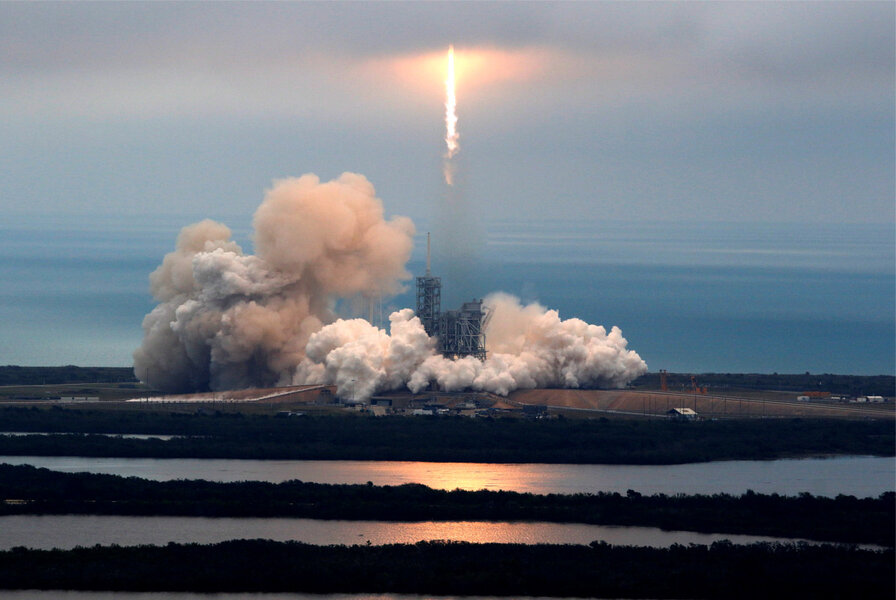SpaceX successfully launches to ISS from Apollo 11 pad
Loading...
| CAPE CANAVERAL, Fla.
A SpaceX Falcon rocket blasted off on Sunday from a Florida launch pad once used to send NASA astronauts to the moon, a step forward for billionaire entrepreneur Elon Musk and his company's goal of ferrying astronauts to the International Space Station.
The 230-foot tall Falcon 9 soared off the seaside launch pad 39A at the Kennedy Space Center at 9:39 a.m. EST carrying a Dragon cargo ship loaded with supplies and science experiments for the station.
Nine minutes after blastoff, the main section of the rocket flew back to a landing pad at nearby Cape Canaveral Air Force Station, the eighth successful touchdown for Space Exploration Technologies Corp.
"Baby came back," Mr. Musk promptly tweeted, celebrating the landing.
SpaceX had decided to delay the mission on Saturday, 13 seconds before launch, due to concerns about the steering system in the rocket's upper stage.
The liftoff marked a successful debut for SpaceX at Kennedy's Launch Complex 39A, originally built for the 1960s-era Apollo moon program and later repurposed for the space shuttles. SpaceX plans to use the pad for commercial missions, as well as future crewed flights.
As The Christian Science Monitor's Charles Wood wrote Saturday:
What makes this launch special is the milestone it represents for an often underappreciated component of spaceflight – the launch pad. Pad 39A served as the origin for a number of aeronautical landmarks, from the first lunar landing to early space shuttle flights.
Its next launch will mark its first action since the last shuttle flight more than half a decade ago.
"I'm a little partial to this pad, as all four of my shuttle flights lifted off from here," Bob Cabana, a former NASA astronaut and current director of NASA's Kennedy Space Center, said during a news conference at the pad on Friday. "So, it means a lot to see it in use and not wasting away in the salt air."
The pad’s rebirth also underscores a renaissance in the space industry, as it undergoes a sea change from public to largely private enterprise. This piece of infrastructure, which once cost US taxpayers over $100,000 a month to keep from rusting “to the ground,” has a metaphorical new lease on life thanks to a literal lease with SpaceX for the next 20 years.
"It was really awesome to see 39A roar back to life," SpaceX Dragon program manager Jessica Jensen told reporters after the launch. "This is a huge deal for us."
NASA closely monitored Sunday's launch to learn more about the company's operations before it clears SpaceX to fly US astronauts.
This was SpaceX's first launch from Florida since an accident in September caused heavy damage to what had been the company's prime site at Cape Canaveral Air Force Station, located just south of the NASA spaceport.
NASA hired SpaceX to fly cargo to the station after the shuttle program ended. SpaceX and Boeing Co are scheduled to begin flying crews to the station by the end of 2018, but a US government report last week said technical hurdles likely will delay both companies.
Last month, SpaceX resumed flying its Falcon 9 rockets using a second launch pad in California, where the first stage of the rocket also succeeded in relanding.
The company plans to reuse the rockets to slash costs and reduce pricing.
SpaceX aims to have the Florida launch pad damaged in last year's explosion up and running by this summer. (Editing by Letitia Stein, Jeffrey Benkoe and Alan Crosby)







